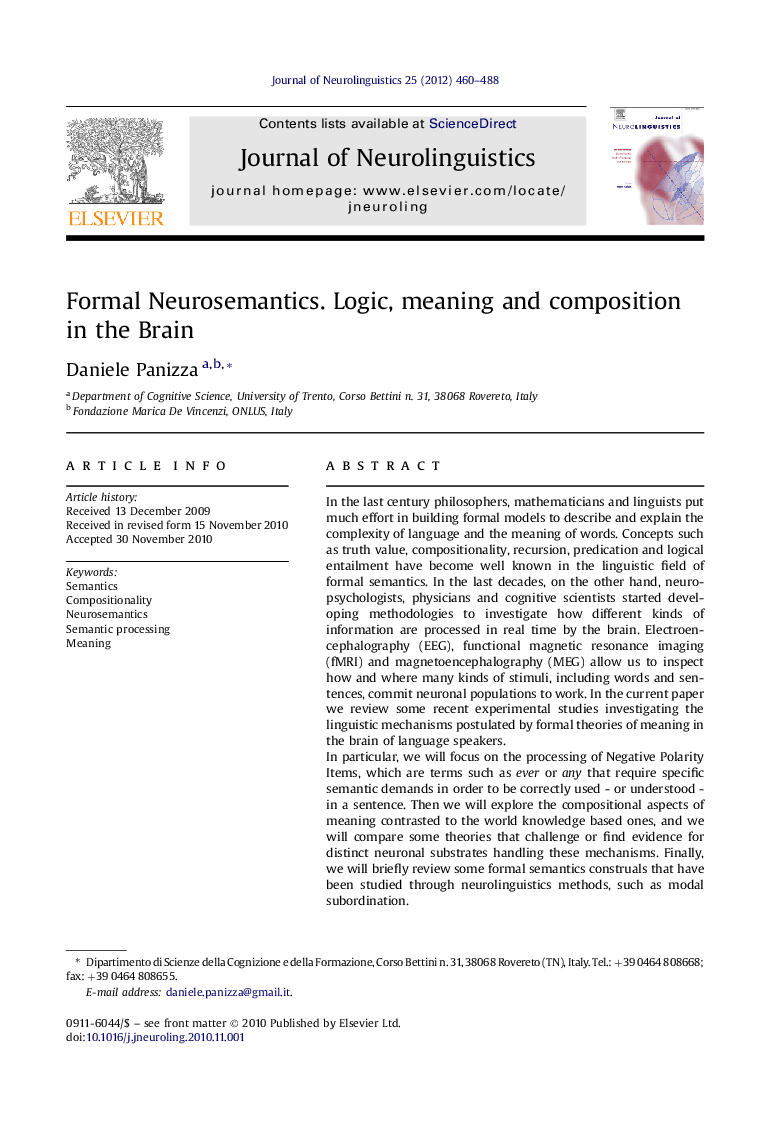| Article ID | Journal | Published Year | Pages | File Type |
|---|---|---|---|---|
| 911875 | Journal of Neurolinguistics | 2012 | 29 Pages |
In the last century philosophers, mathematicians and linguists put much effort in building formal models to describe and explain the complexity of language and the meaning of words. Concepts such as truth value, compositionality, recursion, predication and logical entailment have become well known in the linguistic field of formal semantics. In the last decades, on the other hand, neuropsychologists, physicians and cognitive scientists started developing methodologies to investigate how different kinds of information are processed in real time by the brain. Electroencephalography (EEG), functional magnetic resonance imaging (fMRI) and magnetoencephalography (MEG) allow us to inspect how and where many kinds of stimuli, including words and sentences, commit neuronal populations to work. In the current paper we review some recent experimental studies investigating the linguistic mechanisms postulated by formal theories of meaning in the brain of language speakers.In particular, we will focus on the processing of Negative Polarity Items, which are terms such as ever or any that require specific semantic demands in order to be correctly used - or understood - in a sentence. Then we will explore the compositional aspects of meaning contrasted to the world knowledge based ones, and we will compare some theories that challenge or find evidence for distinct neuronal substrates handling these mechanisms. Finally, we will briefly review some formal semantics construals that have been studied through neurolinguistics methods, such as modal subordination.After this survey, we will conclude that there is neuroscientific evidence that the human brain implements semantic representations and operations that have the following properties: they are abstract, symbolic and grammar-driven. The challenge for the future research, then, will be to figure out how brain functions cooperate and interact with other cognitive systems, in dealing with this kind of information structures.
